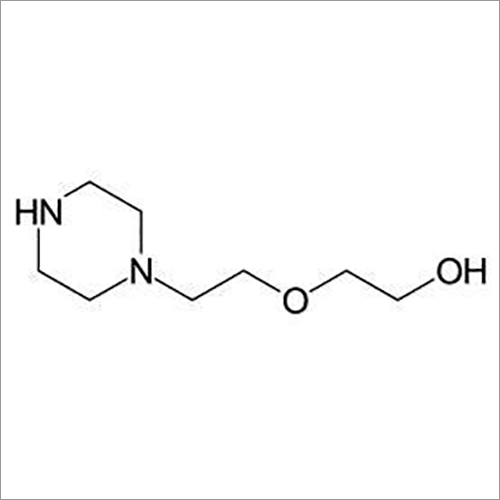
1-(2-(2-Hydroxy Ethoxy)-ethyl) Piperazine (HEEP)
Product Details:
1-(2-(2-Hydroxy Ethoxy)-ethyl) Piperazine (HEEP) Price And Quantity
- 1400 INR/Kilograms
- 100 Kilograms
1-(2-(2-Hydroxy Ethoxy)-ethyl) Piperazine (HEEP) Trade Information
- 1000 Kilograms Per Day
- 1 Week
- Yes
- Contact us for information regarding our sample policy
Product Description
122Hydroxyethoxyethylpiperazine HEEP is a piperazine derivative commonly used as an intermediate in organic synthesis particularly in the pharmaceutical and polymer industries
Chemical Details
IUPAC Name 122Hydroxyethoxyethylpiperazine
Molecular Formula C8H18N2O2
Molecular Weight 17424 gmol
Structure
A piperazine ring substituted at one nitrogen atom with a hydroxyethoxyethyl group
Contains both a hydroxyl group OH and ether O functionalities
Physical Properties
Appearance Clear to pale yellow liquid at room temperature
Boiling Point 270C decomposes
Solubility Highly soluble in water and polar organic solvents like methanol ethanol and acetone
Density 108 gcm at 25C
Applications
1 Pharmaceutical Intermediate
Widely used as a building block in the synthesis of drugs especially those targeting the central nervous system CNS
Functional groups on HEEP make it useful for introducing polar and hydrophilic properties to drug molecules
2 Polymer and Material Science
Epoxy Resins Used as a curing agent for epoxy resins to improve flexibility and hydrophilicity
Polyurethane Synthesis Acts as a chain extender in polyurethane formulations
3 Chemical Research
Serves as a ligand or a precursor in coordination chemistry
Utilized in the synthesis of surfactants detergents and stabilizers
Chemical Reactivity
1 Hydroxyl Group
Can participate in typical reactions such as esterification etherification or crosslinking
2 Ether Group
Provides flexibility and hydrophilicity but is relatively inert chemically
3 Piperazine Nitrogen Atoms
Act as nucleophiles in substitution reactions
Can coordinate with metals or undergo alkylation or acylation
Synthesis of HEEP
Typically synthesized through the reaction of piperazine with ethylene oxide or ethylene glycol derivatives
1 Step 1 Reaction of piperazine with ethylene glycol or ethylene chlorohydrin in the presence of a base to form the hydroxyethoxyethylpiperazine derivative
2 Step 2 Purification using distillation or recrystallization
Safety and Handling
Toxicity
Mildly toxic can cause irritation to the skin eyes and respiratory tract
Handle with care avoiding direct contact or inhalation of vapors
Precautions
Use gloves safety glasses and work in a wellventilated area or fume hood
Store in a cool dry place away from strong oxidizing agents
Would you like assistance with its synthesis specific reactions or application in a particular field

Price:
- 50
- 100
- 200
- 250
- 500
- 1000+








 Call Me Free
Call Me Free
